Hairline Lowering Surgery in Philippines
Search and Compare the Best Clinics and Doctors at the Lowest Prices for Hairline Lowering Surgery in Philippines
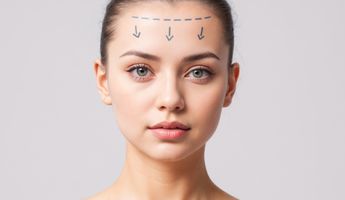
Find the best clinics for Hairline Lowering Surgery in Philippines
No pricing info available
Egypt offers the best prices Worldwide
Price: $ 500
From 1 verified reviews
toni de guzman, 29 November 2017
The place is tidy with a cozy ambiance. The consultation room is very relaxing, the space is not cramped, and the doctor is warm and accommodating. I had one session of Laser brightening peel on my face which I highly recommend! It lessens oiliness and breakouts and leaves a remarkable glow on the skin. Thumbs up for this procedure, It's a winner!
From 93 verified reviews
Steve Frost, 20 September 2020
Best hospital in delhi ncr. Good quality of treatment and takes good care of patients.
From 133 verified reviews
Mari Delos Santos, 16 April 2020
The main lobby will give you a feeling of being in a resort or hotel lobby. The newly open Central Park will be an extra treat, an amenity area that will give patients and visitors the feeling of being at home in their own garden. Doctors here are the best in the country. State of the art facilities and high tech medical equipment. How I wish every Filipino can experience the medical care and assistance at Thé Medical City.❤️ March 4, 2020, I went to the Ambulatory Service Center- as usual long line but patients are comfortably seated and patiently waiting. I have been on food and water fasting for my blood extraction. Not to over fast I approached the lady at the counter 4, to let her know of my situation. She was so quick in attending to my concern and never ask for anything, not even my ID or HMO. She accompanied me at the blood extraction area and everything I need was well taken cared of because of her. Thank you very much Ms. Maria Concepcion Calayan Golla for your kind assistance and compassion. Keep up the excellent work. May your tribe increase. All the best!❤️
JMW Plastic Surgery, can be found in Alaminos, Pangasinan, Philippines and offers its patients Hairline Lowering Surgery procedures as well as 90 other procedures, across 1 different procedure categories. At present, there is no pricing information for Hairline Lowering Surgery procedures at JMW Plastic Surgery. The pricing information is quite specialised, so it's only available on request. The lead specialist at the Hospital will be carrying out all the treatments, and JMW Plastic Surgery is accredited by just one known accreditations institute, PAPRAS - Philippine Association of Plastic, Reconstructive and Aesthetic Surgeons
- Home
- Philippines
Compare Before & After Photos of _procedure_photos.phpHairline Lowering Surgery
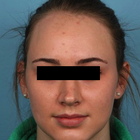
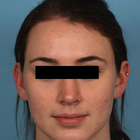
Front view
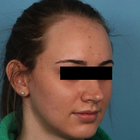
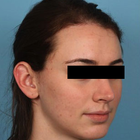
Half-side view

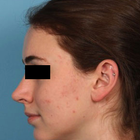
Full-side view

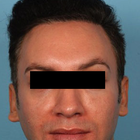
Front view
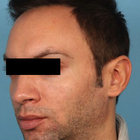
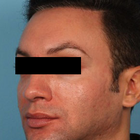
Half-side view


Full-side view
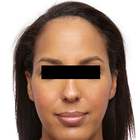

Front view
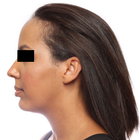

Full-side view
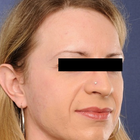
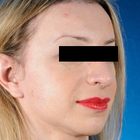
Half-side view
WHY US?
At Medijump, we're making medical easy. You can search, compare, discuss, and book your medical all in one place. We open the door to the best medical providers worldwide, saving you time and energy along the way, and it's all for FREE, no hidden fees, and no price markups guaranteed. So what are you waiting for?

Free

Best Price

Widest Selection

Risk-Free
What you need to know about Hairline Lowering Surgery in Philippines
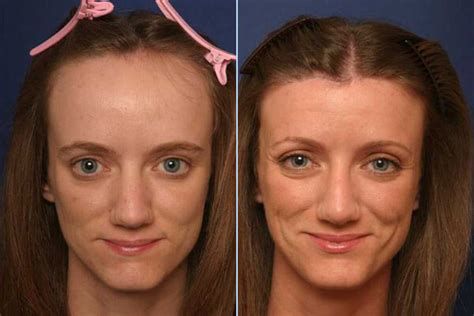
Also known as Forehead Reduction, Forehead Contouring or Scalp Advancement, Hairline Lowering Surgery allows patients to lower their frontal hairline, often lowering it by up to 2 inches. This procedure aims to reduce the distance between the hairline and the eyebrows, creating a more proportionate appearance. It is most commonly done on women with high hairlines, often the result of hair loss.
The procedure usually takes a couple of hours and is performed under general anesthetic. The new hairline is marked on the forehead, the surgeon will cut away this excess skin and the scalp is lowered to the new hairline. Incisions are strategically placed to minimize the visibility of the scar, making it virtually undetectable as it's covered by hair. It's common to combine hair lowering surgery with Facial Feminization Surgery (FFS). Contact a reputable clinic to ensure the best possible results.
What is the cost of Hairline Lowering Surgery in Philippines?
Before choosing a procedure, it is essential to understand the cost of a Hairline Lowering Surgery in Philippines. The cost might vary depending on a number of factors, including the complexity of the procedure, the surgeon's experience and reputation, and the facility. This approximate cost mostly covers the surgeon's fees, anaesthesia, required medical exams, and hospital or operation centre expenses. This is only a broad estimate, so when accounting for other charges, the exact prices might be higher. The ultimate cost may increase as a result of some factors, including consultation fees, outlays for post-operative care such medications, bandages, and follow-up consultations, as well as potential further surgeries to control complications or enhance outcomes.
It's important to keep in mind that Hairline Lowering Surgery is frequently regarded as a cosmetic surgery and may not be covered by conventional health insurance plans. It is best for the patient to speak with their insurance company before the procedure to understand the specific out-of-pocket costs they would have to pay. Some cosmetic surgery practises may provide financing options or payment plans to help patients manage the cost of the procedure.
What does a Hairline Lowering Surgery Procedure Involve?
Hairline lowering suregry is performed under local or general anesthesia. Before the operation begins, the surgeon draws an anticipated post-operative hairline. The surgery is performed according to this and an incision is made along the hairline. The excessive scalp is cut and removed and the rest is stretched to the new hairline. If this is not enough, tissue expanders are used to make it to the new hairline level. Sutures are used to fix the scalp to the bone and incisions are stitched with bandages being applied over the top.
The medical professional ensures that the incision marks are seamlessly concealed within the hairline, thereby reducing any visible traces of the procedure. Once the operation is concluded, the cut is stitched, and a gentle dressing is applied to shield the wound and diminish inflammation. It's important to understand that the intervention may lead to temporary loss of sensation or minor prickling around the area of incision, however, these symptoms tend to dissipate within several months.
How Long Should I Stay in Philippines for a Hairline Lowering Surgery Procedure?
Hairline lowering surgery is an outpatient procedure that takes around 1.5 to 2 hours to complete. After the effects of the sedation subside, you are allowed to leave. Still, you should aim to stay in Philippines for at least 6 days post-op. During this period, you will have a follow-up with the surgeon to check everything is healing as expected and the sutures are removed, usually after 5 to 6 days - this is when you're given the all-clear to travel home.
What's the Recovery Time for Hairline Lowering Surgery Procedures in Philippines?
It will take between 3 to 6 months to allow the regrowth of hair through the scar, which is important as it hides the scar. Recovery time varies from person to person and some people can get back to their normal routine even after 3 days. At least a week is usually required to get back to normal activities and you may find some swelling and bruising over your forehead in the early days. Pain is managed with painkillers and all symptoms subside after a couple of days. A numbing of the forehead is common and normal feeling usually returns after 3 to 5 days.
What sort of Aftercare is Required for Hairline Lowering Surgery Procedures in Philippines?
Aftercare following a Hairline Lowering Surgery is crucial to ensure a smooth recovery and minimization of potential complications. The following are some useful aftercare tips:
- Use icepacks in the initial days to help with inflammation and bruising. Ice is effective in reducing swelling immediately.
- Do not take anti-inflammatory medicines as they increase bleeding tendency.
- Continue taking painkillers prescribed by your doctor.
- Try not to look upwards and avoid frowning as this can be damaging to your stitches.
- Do not lift heavy objects.
- Keep your head a little higher whilst resting.
- Ensure that tight bandages have been applied over the wounds and replace regularly with fresh ones.
- Do not take a bath when the bandages are still intact as a wet bandage can be the cause of infection.
- Avoid strenuous activities such as the gym, running, swimming, etc. for at least 2 weeks after the surgery.
- Do not put hair bands or any other accessory on your head for some time.
- Do not drink or smoke as it will hinder the healing process.
- Ensure you have a diet rich in vitamin C as it makes the healing process faster.
What's the Success Rate of Hairline Lowering Surgery Procedures?
A Hairline Lowering Surgery frequently yields remarkable results, with a significant number of individuals expressing contentment with their post-procedure appearance. Nevertheless, outcomes may differ based on the medical institution or medical professional involved. With the possibility of the scar being visible with certain hairstyles, Hair Transplantation could be applied to further reduce the appearance of any scarring.
Notably, while Hairline Lowering Surgery tends to yield positive results for the majority, it might vary on an individual basis. Factors such as your unique hair growth pattern, scalp flexibility, and the overall state of your hair condition could all influence your final outcome. Therefore, maintaining ongoing communication with your medical professional and adhering to their recommendations both pre and post-treatment is crucial to optimising your results.
Are there Alternatives to Hairline Lowering Surgery Procedures in Philippines?
Surgery is not the only option. Consider these methods before opting for surgical treatment:
- Grafting hair (Hair Transplant): with this technique more hairs are grafted along your hairline instead of lowering it. This is also used for the thickening of your hair. A new layer of hair is grafted below your natural hairline. 1200 to 2400 hair strands are grafted. These hairs fall out after 3 weeks then regrow in 4 months. 10 months is required before you'll see the true longterm result. This is a non-surgical alternative to hairline lowering surgery and it is found to be very effective in reducing the size of your forehead.
- Hairstyling: You can hide a big forehead by styling your hair in such a manner. Of course, this is a non-surgical method. Choose those hairstyles which cover your forehead the most. Some people will use headscarves and hats to also hide their forehead.
What Should You Expect Before and After the Procedure?
A fundamental phase before proceeding with a Hairline Lowering Surgery in Philippines is the preliminary discussion with your medical expert. This interaction involves a comprehensive health evaluation, scrutiny of your medical background, and discussion of any medications you currently use by your expert. They will also perform an exhaustive examination of your scalp and hairline. This evaluation offers the medical professional an opportunity to decide if you're the perfect fit for the process. Moreover, they will deliberate on your anticipation and cosmetic objectives, ensuring they align with the realistic outcomes offered by Hairline Lowering Surgery.
Feeling slight discomfort, swelling, and bruising in the treated part is a normal sensation post a Hairline Lowering Surgery. It is vital to abide by the directives of your medical professional, which may involve keeping your cranium elevated and avoiding rigorous activities to manage these symptoms. For the initial few days succeeding the procedure, rest is essential, providing your body with time to recuperate. Your medical expert might recommend pain-relief therapy for discomfort management. Usually, stitches are taken out approximately one week after the surgery, and by this time, most people can get back to their work and routine activities. Regular follow-up sessions with your medical expert should be expected during the recovery span. These sessions offer your expert a chance to track your recovery progress, manage any prospective obstacles, and provide support during your healing period.
What are the Risks and Side Effects of Hairline Lowering Surgery in Philippines?
While side effects are usually minimal, they are important to think about. After the Hairline Lowering Surgery, you might feel some short-term side effects like swelling, pain, and bruising around the spot where you had the surgery. This is normal during healing and usually goes away in a few days. Numbness or tingling near the cut is also common after a Hairline Lowering Surgery. This happens because small nerves can be affected during the procedure. As your body recovers, these feelings should slowly lessen and finally go away.
Some people might notice hair loss, usually temporary, around the cut. This happens due to the stress on the hair roots during the procedure. However, this kind of hair loss usually doesn't last more than a few months, and new hair will start to grow. More serious risks include infection, heavy bleeding, or bad reactions to the anesthesia. While these problems are rare, they need immediate medical help. To reduce these risks, it's crucial to pick a good surgeon and follow their before and after care instructions.
Whilst the information presented here has been accurately sourced and verified by a medical professional for its accuracy, it is still advised to consult with your doctor before pursuing a medical treatment at one of the listed medical providers
No Time?
Tell us what you're looking for and we'll reachout to the top clinics all at once
Enquire Now

Popular Procedures in Philippines
Prices Start From $136

Prices Start From $4

Prices Start From $126

Recommended Medical Centers in Philippines for Hairline Lowering Surgery

- Interpreter services
- Translation service
- Religious facilities
- Medical records transfer
- Medical travel insurance
- Health insurance coordination
- TV in the room
- Safe in the room
- Phone in the room
- Private rooms for patients available

- Interpreter services
- Translation service
- Religious facilities
- Medical records transfer
- Medical travel insurance
- Health insurance coordination
- TV in the room
- Safe in the room
- Phone in the room
- Private rooms for patients available

- Interpreter services
- Translation service
- Religious facilities
- Medical records transfer
- Medical travel insurance
- Health insurance coordination
- TV in the room
- Safe in the room
- Phone in the room
- Private rooms for patients available

- Interpreter services
- Translation service
- Religious facilities
- Medical records transfer
- Medical travel insurance
- Health insurance coordination
- TV in the room
- Safe in the room
- Phone in the room
- Private rooms for patients available

- Interpreter services
- Translation service
- Religious facilities
- Medical records transfer
- Medical travel insurance
- Health insurance coordination
- TV in the room
- Safe in the room
- Phone in the room
- Private rooms for patients available

- Interpreter services
- Translation service
- Religious facilities
- Medical records transfer
- Medical travel insurance
- Health insurance coordination
- TV in the room
- Safe in the room
- Phone in the room
- Private rooms for patients available

- Interpreter services
- Translation service
- Religious facilities
- Medical records transfer
- Medical travel insurance
- Health insurance coordination
- TV in the room
- Safe in the room
- Phone in the room
- Private rooms for patients available

- Interpreter services
- Translation service
- Religious facilities
- Medical records transfer
- Medical travel insurance
- Health insurance coordination
- TV in the room
- Safe in the room
- Phone in the room
- Private rooms for patients available

- Interpreter services
- Translation service
- Religious facilities
- Medical records transfer
- Medical travel insurance
- Health insurance coordination
- TV in the room
- Safe in the room
- Phone in the room
- Private rooms for patients available

- Interpreter services
- Translation service
- Religious facilities
- Medical records transfer
- Medical travel insurance
- Health insurance coordination
- TV in the room
- Safe in the room
- Phone in the room
- Private rooms for patients available
Hairline Lowering Surgery in and around Philippines
About the Philippines
The Philippines is an island nation in the heart of Southeast Asia. It extends from the south of China to the northern tip of Borneo. It is also known as the ‘Pearl of the Orient Seas’, the Philippines is an archipelago of 7,107 islands. It comprises three main island groups, Luzon, Visayas, and Mindanao. Manila, the capital city, lies in the southwestern part of Luzon. Quezon City is the largest and most populous city in the country.
It is a prominent English-speaking country and was once a colony of Spain and the United States. It’s the most Westernised country in Asia. However, its culture is a mix of indigenous Malay culture and Spanish and American heritage.
Besides being one of the top tourist destinations, the Philippines is also an emerging medical tourism destination. It ranks in 8th position among popular medical tourism countries and more than 10,000 medical tourists visit the Philippines every year for various treatments. The following factors all contribute to the progress of medical tourism within the Philippines.
- Expert and board-certified medical professionals with international qualifications and training.
- Internationally-accredited hospitals with state-of-the-art medical equipment and modern facilities.
- Affordable costs compared to advanced nations
- Inexpensive accommodation
- The English language is widely-spoken making communication with the Medical team and patients easy.
- Tropical climate helps in the recovery and recuperation
The most common and popular procedures and treatments in the Philippines are cosmetic surgery, weight-loss surgery, dermatology, ophthalmology, and dentistry. As of late, people come here even for liver and kidney transplant surgeries, and cardiac surgeries due to the cost advantage it provides.
For example, a Breast Augmentation surgery that costs between $7,500-$8,500 in the US costs only between $3,000-$3,500 in the Philippines which would be a saving of about 58% to 60%. Also, a coronary artery bypass surgery costing $70,000-$133,000 in the US, will only cost between $11,500-$17,500 and would result in a saving of almost 83% to 86%. Even after adding travel and living expenses, it still makes it a, very good value for the patient to get medical care in the Philippines and several of the more popular Hospital and Clinics are located in Manila, and are St. Luke's Medical Center, Makati Medical Center, The Medical City and Asian Hospital and Medical Center
Popular Parts of the Philippines
The Philippines has a total land area of 116,000 square miles, with a large population of 107,791,044 million people. It has many pristine beaches, mountains, rainforests, islands, heritage towns, and monuments, With hotels, food, and transportation very affordable, it’s also a good budget tourism destination.
The following are some of the most beautiful places to visit in the Philippines:
- El Nido –is known for its white-sand beaches, clear turquoise waters, and coral reefs and is the gateway to the Bacuit archipelago which is a group of islands. The laid-back town of El Nido is a base for island-hopping tours, and kayaking trips to mountainous Cadlao Island, El Nido is situated on the northern edge of mainland Palawan.
- Coron – Is also situated in Palawan and is known for its warm waters, ideal for snorkeling, kayaking, and deep diving. The breathtaking Kayangan Lake, surrounded by karst walls is a visual treat. It is the cleanest lake in the Philippines.
- Tubbataha Reefs Natural Park –is also part of Palawan and is situated to the southeast, in the Sulu Sea. It’s home to countless coral reefs, and expansive breeds of fish, dolphins, sharks, and whales and It is a great water destination for divers.
- Banaue Rice Terraces – They lie within the mountainous region of the Cordilleras. The rice terraces are about 2,000 years old, a result of the labor of the predecessors of the region and They provide efficient space for people to farm on.
- Intramuros – The walled historical area of Manila contains the remains of a bygone era with its cobblestone streets and preserved remnants. Walking tours and carromata rides (two-wheeled box-like vehicles drawn by a single native pony) are popular here.
- Mount Mayon –is a 2,500-meter-tall active volcano. It’s famed for its perfect symmetry and accurate conical shape. You can enjoy the view from some distance or experience it at close quarters, by hiking for a couple of days.
- Hinatuan Enchanted River – Locals believe the river has mystical qualities. They feel fairies and Engkanto (other nature spirits) guard the enchanting blue-green river. The unknown source of clear saltwater is another mystery surrounding the river.
Boracay and Siargao are other popular tourist spots with their powdery white sand and water activities.
Weather and Climate in the Philippines
The Philippines has a tropical maritime climate. The general weather is hot and very humid. It experiences only three seasons:
- Summer Season – A very hot and dry summer season is between March and May.
- Wet Season – Rainy Season is between June and November when the southwest monsoon is most active. In this period, typhoons are common, especially during September and October.
- Dry Season – There is a cool and dry season between December and February, due to the cold winds brought in by the northeastern monsoon.
The average temperature of the Philippines ranges between 25°C and 32°C (78-90°F) with humidity of about 77%. High-altitude areas are much cooler, with night temperatures dropping to 20°C (68°F). The average annual temperature is around 26.6°C (79.9°F)
Getting Around in the Philippines
The Philippines is an island nation, most international travelers reach the country by air. The country has many international airports in various cities including Cebu, Davao, Manila, Kalibo, and Angeles.
Many airlines operate flights in and out of Manila to several destinations. Philippine Airlines, Cebu Pacific, and Air Asia are the national carriers of the Philippines. Singapore Airlines, Cathay Pacific, and many Middle Eastern airlines operate direct flights to Manila. The Southeast Asian cities of Bangkok and Ho Chi Minh City have wide connectivity to Manila and Cebu. You can reach Manila directly from London by flying Philippine Airlines. US travelers can fly via Japan to the Philippines.
Cebu Pacific, Tigerair Philippines, and PAL Express are some low-cost carriers that service domestic destinations in the country.
For transport within the Philippines, you have Jeepneys which are WWII- army jeeps converted into transport jeeps. They are cheap, open, and usually fully loaded with passengers which are normally cramped with 14 to 20 people sitting shoulder to shoulder depending on the length of the vehicle They operate as collective taxis, picking up and dropping passengers within cities.
Tourist Visas in the Philippines
Travelers from more than 150 countries that have diplomatic relations with the Philippines can enter the country without a tourist visa. EU, Australia, Japan, and the US are a few visa-exempt countries. In general, you can stay for up to 30 days, provided your passport is valid for at least six months after your arrival. Showing proof of onward and return journeys is compulsory.
Citizens of India, China, and Egypt are some of the countries that will need to get a visa in advance to enter the Philippines.
Additional Information
- Philippine Peso or Piso (PHP) is the official currency of the Philippines. Its subdivision is 100 centavos or centimos for a Peso. The current exchange rate for one US dollar is 51.99 PHP. You will be able to use US Dollars in Metro Manila and possibly in Cebu City. In other areas, it’s better to have pesos for exchange.
- You will find all major banks and plenty of ATMs everywhere. Master and Visa cards are accepted in most businesses.
- Tagalog or Filipino language is the main spoken language. English is also spoken and understood in the Philippines, due to the US influence during its colonization.
- Roman Catholicism is the major religion of the Philippines. 91% of the population are Christians and about 5.5% comprises of Islam religion.
- New Year’s Day, Araw ng Kagitingan, Independence Day, National Hero’s Day, Bonifacio Day, and Christmas are some of the important holidays in the Philippines.
Popular Searches
- Plastic Surgery in Thailand
- Dental Implants in Thailand
- Hair Transplant in Thailand
- Breast Augmentation Thailand
- Gastric Sleeve in Thailand
- Gender Reassignment Surgery in Thailand
- Laser Hair Removal in Bangkok
- Botox in Bangkok
- Dermatology in Bangkok
- Breast Augmentation in Bangkok
- Coolsculpting in Bangkok
- Veneers in Turkey
- Hair Transplant in Turkey
- Rhinoplasty in Turkey
- Stem Cell Therapy in Mexico
- Rhinoplasty in Mexico
- Liposuction in Mexico
- Coolsculpting in Tijuana
- Rhinoplasty in Korea
- Scar Removal in Korea
- Gastric Sleeve in Turkey
- Bone Marrow Transplant in India
- Invisalign in Malaysia
- Plastic Surgery in the Dominican Republic
- Tummy Tuck in the Dominican Republic
- Plastic and Cosmetic Surgery in Poland
- Rhinoplasty in Poland
- Hair Implant in Poland
- Dental Implants in Poland
- IVF in Turkey



